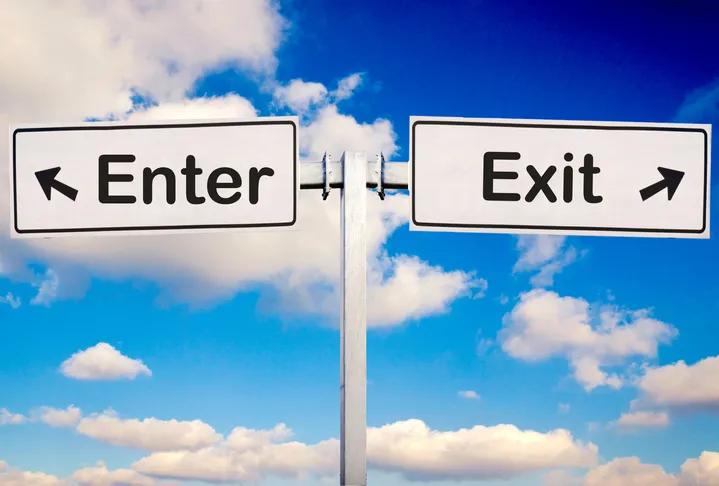
Weight Loss Made Simple-ISH
I have about 45 minutes each work day during which I choose to listen to podcasts relevant to the work I love to do with my patients. A recent fave podcast broke down a question common in any medical practice: how does a given individual LOSE or GAIN fat in their body? The approach is so logical and so comprehensive that I found it immensely appealing and just had to share it, so here goes.
Podcast in question is Dr. Peter Attia’s podcast, called The Drive, which has many free episodes of great interest. For subscribers he offers additional content, both episodes where he answers questions, and great show notes. I want to talk about Episode # 22, an “Ask Me Anything” podcast on Fat Flux. Non-subscribers can get some of the content here: https://peterattiamd.com/ama22/ .
Fat Flux, Simplified: Fat Loss
When everything is in balance, and everything stays the same, it must be that all the energy coming in is equal to the energy going out. When you want to change the amount of fat in your body—and let’s just say we’re focusing on losing fat not gaining it—you’re really talking about the SIZE of your fat cells. (If you want to decrease the NUMBER of fat cells in your body, liposuction is really your only choice, cosmetically a choice but not helpful for metabolic health.)
So to lose weight you want to shrink the size of your fat cell. Fat cell size is determined by the balance of INPUT and OUTGO. Attia compares this to people in a room: if you have a steady number of 100 people in a room, the number entering and leaving must be the same. To decrease the number of people in a room, more have to leave than enter: same principle goes for cars on a highway, rabbits in a pen or fat molecules in a given fat cell.
INPUT is a combination of two processes
- De Novo Lipogenesis can take glucose (sugar, from carbohydrates) and perform some magic to turn sugar into stored fat.
- Re-esterification takes all the fat you eat, several steps along the way, and re-assembles it as a stored fat inside the fat cell
OUTGO is simpler, just one method: you have enzymes in your fat cells called lipases that break down the fat inside your cell and send it out into the circulation where you can use it as fuel.
Great, we just need to tweak ONE of three possible steps to reduce the number of fat in the cell. To reduce fat influx, we need to reduce glucose and the magic steps to make it into fat, OR reducing fats and the magic steps it takes in the cell, OR by increasing the amount of outgoing fat by increasing lipase (in this case HPL = hormone sensitive lipase) activity. OR all ov the above.
Let’s take those three steps separately and go over the obvious steps to take and a bit of the not so obvious steps that can affect the process.
STEP ONE
Reducing glucose is pretty straightforward: just reduce carbs, the question is how much? THAT answer has to be individualized. It matters what’s been going on in your body in the past. If you’ve held on to either a lot of extra fat or a moderate amount for a long time, you probably have to get carbs pretty low. Check out a smartphone app like CarbManager or Cronometer or MyFitnessPal and get your total carbs “nice and low.” Certainly under 100 grams total carbs, likely under 50, at least for a while. (Don’t look at net carbs: everyone’s “net” can be different with exactly the same food.)
Glucose magic is another story: THIS IS THE HARDEST PART TO CHANGE. For glucose to get into the cell and, once there, to be turned into fat—depends on having enough insulin. Insulin is a hormone made in your pancreas, in response to blood sugar and other factors, that enables “growth.” ALL kinds of growth. We need some, just enough, not too much.
To block that insulin-based magic, then, requires lowering your body’s production of insulin. To keep your insulin nice and low, you need some or all of these:
- Low level of carbs, especially no liquid ones.
- Enough protein from wild-caught, mercury-free fish and shellfish, grass-fed red meat and pasture-raised chicken and eggs. (Most people don’t eat near enough protein: at least a bulky-palm-and-a-half sized portion three times a day is good. Eating too little protein generally drives greater hunger and muscle loss, see #5 below.) (Vegetarians please see below *.)
- Good sleep habits and stress management
- Good hormone levels help: melatonin, cortisol, thyroid, estrogen, and testosterone to start with
- Adequate muscle mass to work as a glucose sink (avoids spiking insuli)
- Exercise helps, but not so much that it’s stressful
- Fasting helps: overnight for 13 or more hours, up to a week-long fast (check with your doctor!)
- Eat real food: lots of non-starchy vegetables particularly helpful
- Green tea and coffee might help.
STEP TWO
Reducing fat should really be “avoid added fats.” Please eat those nice fatty, nutritious and flavorful egg yolks (their choline will help you). Feel fine about eating chicken skin. Fatty fish is good. Just don’t add lots of butter to your _________ (fill in blank: coffee?). If you like fat on your vegetables, use olive oil or Primal Mayo instead of butter. Sure, have some nuts, but not spoonfuls of nut butter.
Fat magic is dependent on two helpers: lipoprotein lipase and… insulin! (You already know how to reduce insulin!) Great, I’ll follow all those steps above. Now: What lowers lipoprotein lipase? That’s hard to answer, but let’s just say, again, insulin boosts lipoprotein lipase, so less insulin means less lipoprotein lipase.
BIGGEST MAGIC STEP:
So no matter where you look: your absolutely clear job is to lower insulin. Low enough that your fasting insulin is 2-5. Low enough that even after a big meal never goes over 80-100. An uncomfortable but routine lab test called a glucose tolerance test with insulin levels will give you that information. There are other articles here about insulin resistance LINK LINK. Cliff notes are: eat less carbs and eat less often and go longer without eating (taking salt and electrolytes if that helps).
AND REMEMBER :
Your other job is to think about whether you need to lower the fats you eat. Very healthy, newly fat people can usually do fine with lots of butter in their coffee, on their spoon, nut butters, etc., but for the rest of us: concentrate on ENOUGH PROTEIN, non-starchy vegetables, and keep insulin nice and low. Routine lab tests should include a fasting insulin, even more important than a fasting glucose.
~ ~ ~ ~ ~ ~ ~ ~
* Vegetarians ask, “Are we just left with eating a lot of eggs? What else can we eat?” All other vegetarian sources of protein are a bit of a mixed bag:
Yes, you really can eat more eggs than you think. 1-4 a day is certainly fine
Dairy is probably your best 2nd choice: a zero-fat yogurt. Even dairy though, boosts insulin. After all, remember, it’s a “growth” hormone.
Beans might be your second choice, a moderate amount of both protein and carbohydrates.
Grains are your least helpful choice, a scat amount of protein with a generous amount of carbohydrates.
Vegetables of course are great, but really they aren’t very rich in protein.
Keep fruit to a serious minimum and NO liquid fruits or other sweet drinks.

